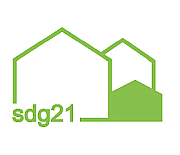A first version of the list of ecological settlements was published on the website of the non-profit association ASKA e.V. Karlsruhe in February 2000. In April 2001, the page was updated as part of a student research project at ifib - Institute for Industrial Building Planning at the Faculty of Architecture at the University of Karlsruhe by Holger Wolpensinger has been further expanded. Since then, the website has been run on a voluntary and non-commercial basis by Holger Wolpensinger with the support of numerous friends and colleagues. In April 2004, the screen design was revised by Achim Rhein and the navigation was reorganized. In August 2016, the conversion to WordPress took place.
The list is continuously supplemented by new ecological or sustainable settlement projects, so that the web directory should be relatively complete. The newer projects usually use the term "sustainable settlement" instead of "eco-settlements". Often it is housing projects or building groups that implement such contents. Furthermore, it should be pointed out that ecological measures and technologies are often no longer explicitly named, which can be interpreted as the increasing establishment of ecological building standards. In part, however, it still simply does not take place. Since 2010, neighbourhoods or housing estates with fewer than 20 residential units have only been included if they have pursued a particularly innovative concept or are a new type representative.
From 1985 to 2017, in Germany 250 settlements and neighbourhoods with a total of almost 50,000 apartments built in a sustainable or ecological context. Among them meanwhile 14 XXL city districts (from 1,000 CU) with a total of around 42,000 units. By comparison, 220,197 new apartments were built in 2015 (destatis.de). In Germany, new housing units were built in the European comparison (sustainable-settlements.net) with around 250 sustainable settlements and urban quarters out of a total of 419 registered projects in Europe, slightly more than half have been realised.
